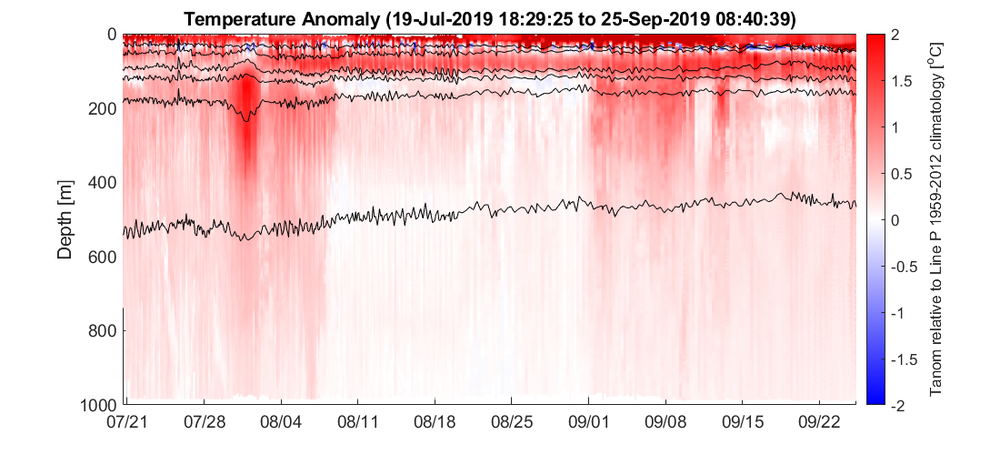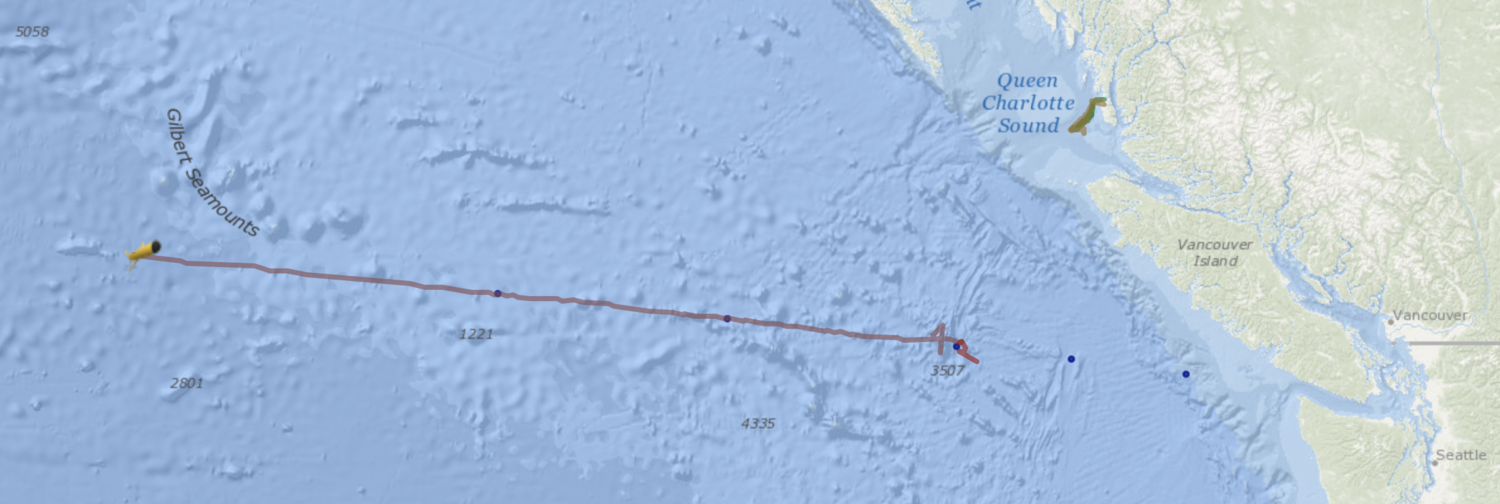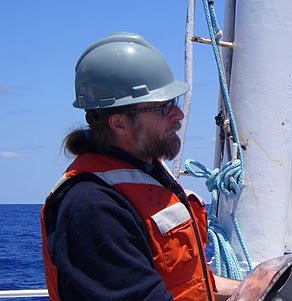Exactly two months after he was deployed, C-PROOF underwater profiling glider dfo-walle652, or “Wall-e”, reached Station Papa at 50 N, 145 W in the Gulf of Alaska. Launched at Explorer Seamount 19 July, 2019, Wall-e made the 880 km trip to Station Papa while collecting valuable data that measures ocean temperature, salinity, deep-water productivity, and tracks oxygen levels, all down to a depth of 1000 m. Wall-e has been out during the recent marine heatwave that some are calling the “Return of the Blob”, and indeed Wall-e has seen anomalously warm temperatures on his trip.
 Temperature anomaly along Line P as measured by glider Wall-e, relative to the average in August/September from 1959-2012 as collected by the DFO Line-P program. Note anomalously high temperatures, not only near the surface, but to depths greater than 800 m, evidence of long-term changes in the Gulf of Alaska. For more details on the long-term trends see Freeland and Ross, 2019. (High res. version of plot.)
Temperature anomaly along Line P as measured by glider Wall-e, relative to the average in August/September from 1959-2012 as collected by the DFO Line-P program. Note anomalously high temperatures, not only near the surface, but to depths greater than 800 m, evidence of long-term changes in the Gulf of Alaska. For more details on the long-term trends see Freeland and Ross, 2019. (High res. version of plot.)
Along the way the C-PROOF team, lead by Institute of Ocean Sciences/DFO scientist Tetjana Ross and technician James Pegg, performed many tests on the glider, with a particular focus on determining power consumption in order to have an optimal journey back home. Tests complete, the team will guide Wall-e on a 1400 km journey along Line P, back to BC coastal waters, collecting full-resolution data on the way back.
 Wall-e’s location, 19 Sep, 2019.
Wall-e’s location, 19 Sep, 2019.
Long term, C-PROOF will have a number of gliders continuously in these important waters offshore of Canada. Canada’s weather is strongly influenced by the temperatures in the Pacific, with effects that are felt across the country, and C-PROOF gliders will be there to improve our prediction of that weather. The waters are also highly productive and home to large fisheries, and the gliders will help us better understand this natural resource. Long-term, deployed for many years, they will help us understand long-term changes in our ocean, including warming, de-oxygenation, and increased ocean acidity.
Follow along with Wall-e’s return trip at the live C-PROOF mission webpage: http://cproof.uvic.ca/deployments/ and see the plots of the data here.
